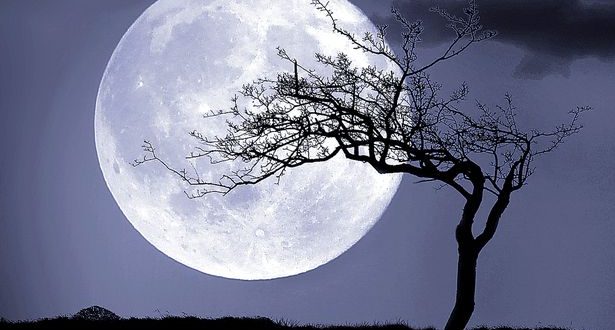The night sky will be bright as the brightest and closest moon, called the “Supermoon,” takes to the sky on Monday night.
The Supermoon on November 14 will be the closest a full moon has been to Earth since January 26, 1948.
“As long as humans have been alive, they’ve had the moon, and now we have this modern understanding of what’s going on with our celestial neighbor,” said Noah Petro, a research scientist at NASA Goddard Space Flight Center. “We want people to recognize the moon is there and to go out and admire it, not just Monday but for the weeks and months and years to follow.”
Monday’s moon will actually reach fullness in the morning, with perigee – its closest approach to Earth in its orbit – happening shortly after.
The distance between Earth and its moon changes because the moon’s orbit is not a perfect circle, but more elliptical, so that one side is closer to Earth than the other. A moon becomes full when it is in alignment with the sun and Earth, creating a stronger gravitational pull that stretches the orbit to an even more elliptical shape.
That pull will also impact fall’s ballooning tides, with coastal flooding expected during high tides.
While the average full moon is about 236,790 miles from Earth, Monday’s moon will be 221,525 miles away – a difference of 15,265 miles.
“That’s a big number to you and me, but to the moon and space, it’s not that huge of a deal,” Petro said. “It’s an interesting quirk in orbital dynamics.”
If it sounds like Petro is trying to temper enthusiasm about the supermoon, he is.
Scientists struggle with stoking excitement while at the same time not wanting people to be disappointed if they aren’t overly impressed by an astral display, be it a meteor shower or swollen full moon.
Even the term “supermoon” has fueled debate. It was coined by astrologer Richard Nolle as a way to define a moon that is at 90 percent or more of its closest approach to Earth. But since then, others, including astronomers, have picked up on the catchy nickname and brought their own definitions to the table.
That’s why, depending on the source, there could be between four and six supermoons on average per year. One NASA blog counts three in 2016, including Monday’s, while Petro said he and his colleague’s consider only November’s full moon super this year.
“It’s not an astronomy term or a physics term. It’s kind of a new development,” said Bob Berman, an astronomer with the online astronomy website Slooh and a columnist for Astronomy magazine. “The concern about the hype is that many people will think they are going to see this gigantic moon, but it’s only about 8 percent closer than the average moon.”
As the moon breaks the horizon, it will appear enormous, which Berman said is an optical illusion that occurs because of how celestial objects are perceived on Earth. It also has to do with the ability to compare the moon as it breaks the horizon with objects in the foreground such as trees or homes.
“If you want to see a big moon, watch it rise. It’s a psychological effect,” Berman said.
Astronomers at Slooh are calling Monday’s full moon a “mega beaver moon” combining its super status with its Native American association. According to The Old Farmer’s Almanac, November was a time to set beaver traps before streams froze.
Florida Atlantic University astronomer Eric Vandernoot, who runs the school’s astronomical observatory, said hype or not, he hopes the supermoon piques the public’s interest in the moon and the mysteries it still holds.
NASA’s Lunar Reconnaissance Orbiter is revealing the moon to be more dynamic than anyone thought, including the discovery of new lunar “skylights,” which are voids in the moon where the surface has collapsed.
“I hope it awakens people’s interest in the moon,” Vandernoot said. “There are all kinds of interesting and wonderful things on it.”
Agencies/Canadajournal
 Canada Journal – News of the World Articles and videos to bring you the biggest Canadian news stories from across the country every day
Canada Journal – News of the World Articles and videos to bring you the biggest Canadian news stories from across the country every day



